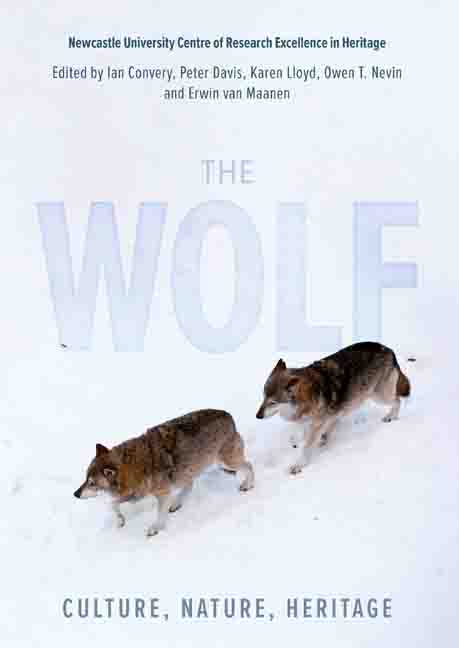Book contents
- Frontmatter
- Dedication
- Contents
- List of Illustrations
- Preface and Acknowledgments
- List of Abbreviations
- Poem: Trophic Cascade by Camille T Dungy
- Foreword
- Part I Imagining the Wolf
- Part II What Makes the Wolf
- Part III Return of the Wolf
- Part IV Personal Encounters
- Afterword: The Ecological Disadvantage of Living on an Island
- Glossary
- List of Contributors
- Index
20 - The Thylacine: A Wolf in Name Only
Published online by Cambridge University Press: 10 January 2024
- Frontmatter
- Dedication
- Contents
- List of Illustrations
- Preface and Acknowledgments
- List of Abbreviations
- Poem: Trophic Cascade by Camille T Dungy
- Foreword
- Part I Imagining the Wolf
- Part II What Makes the Wolf
- Part III Return of the Wolf
- Part IV Personal Encounters
- Afterword: The Ecological Disadvantage of Living on an Island
- Glossary
- List of Contributors
- Index
Summary
The Thylacine, or Tasmanian wolf (Thylacinus cynocephalus), was the sole surviving member of the Thylacinidae lineage and the largest marsupial carnivore to have existed into modern times. The Thylacine was crepuscular in habit, shy by disposition, and rarely observed in the wild. Historically, they were found throughout Tasmania, with their preferred habitat being a mosaic of dry sclerophyll forests, wetlands and grasslands. The last known captive specimen died at Hobart Zoo on 7 September 1936. The species is now listed as extinct under Australia's Environment Protection and Biodiversity Conservation Act 1999, and under the International Union for Conservation of Nature Red List (Burbidge and Woinarski 2016).
The Thylacine has traditionally been viewed as being ecologically closer to the smaller canids, like the fox or coyote, than the wolf. Although evolutionary remote from its placental cousins, it is regarded as one of the most remarkable examples of parallel evolution to be found in mammals, with a wolf-like appearance – except this wolf possessed a pouch in which to rear its young.
The first description of the Thylacine, ‘An animal of truly singular and nouvel description’, was provided by Governor William Paterson and published in the Sydney Gazette and New South Wales Advertiser on 21 April 1805. However, it was not until 1808 that George Harris, the Deputy Surveyor of Van Diemen's Land, scientifically described Didelphis cynocephala – the Zebra wolf – in the Transactions of the Linnaean Society. At the time of its discovery, the Thylacine had long since disappeared from its former range in mainland Australia and New Guinea. Various factors are cited for this demise, including climate change, competition with the dingo (Canis lupus dingo), disease and humans.
During the 19th century, the Thylacine was perceived as little more than an evolutionary relic, primitive and ill-adapted to its island home. This narrow mindset tainted the view of its behaviour. The Thylacine was considered slow, stupid, morose and cowardly, all of which could not be further from the truth. Guiler (1985) states ‘We must condemn our predecessors for not investigating a species that was both interesting and, even then, rare enough to excite curiosity’. Ironically, what little we do know about its natural behaviour has been sourced from the recollections of the bushmen and graziers who persecuted the species.
- Type
- Chapter
- Information
- The WolfCulture, Nature, Heritage, pp. 231 - 236Publisher: Boydell & BrewerPrint publication year: 2023



